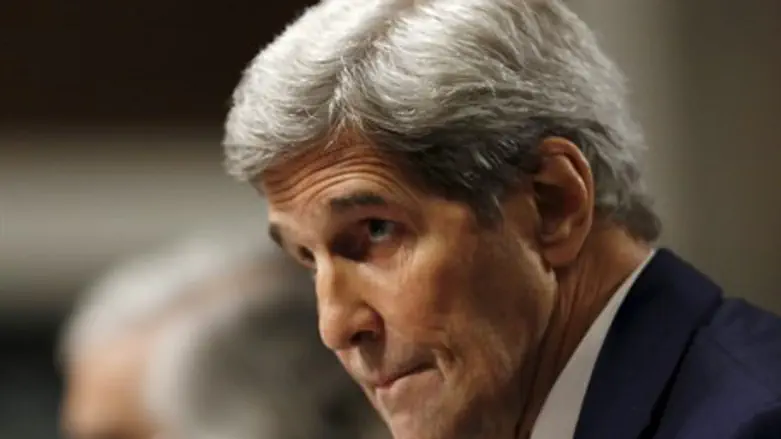
Iran's covert Parchin army base has long been reported as the key site in Iran's nuclear detonator testing needed in constructing a nuclear weapon, but according to US State Department spokesperson John Kirby on Thursday, it's just a "conventional military site."
Speaking at a press briefing, Kirby was asked about the International Atomic Energy Agency (IAEA) report released earlier in the day, according to which Iran appears to have built an extension to the covert site since May, in a possible covering up or expansion of its nuclear detonator testing at the site that the IAEA has reported on numerous times in the past.
Even more troubling is that Iran last October admitted to using Parchin to test exploding bridge wires, used as nuclear detonators.
But Kirby claimed that "it’s important to remember that when you’re talking about a site like Parchin you’re talking about a conventional military site, not a nuclear site."
Kirby said that in the framework the nuclear deal and the classified side deal with the IAEA that is being kept hidden from Congress, "there wouldn't be any IAEA or other restrictions on new construction at that site were they to occur." That assertion is based on Iran's claim, which the state department has evidently accepted, according to which Parchin isn't a nuclear site.
When pressed by a puzzled reporter why Parchin would appear in the IAEA report if the site has nothing to do with Iran's nuclear program, Kirby evaded the issue by referring him to the UN's IAEA.
In its side deal "road map" with Iran, the IAEA is seeking to clarify military aspects of Iran's nuclear program including past nuclear detonator testing, which it has long warned Iran is conducting at Parchin. The IAEA has repeatedly asked for permission to inspect the site, requests that were denied by Iran.
In the new deal, the IAEA will still not inspect Parchin, but will rather let Iran inspect the covert site itself.
The new IAEA report includes data by several member states giving further evidence that Parchin might have housed hydrodynamic experiments to assess how specific materials react under high pressure, such as in a nuclear blast.
IAEA reports in November 2011 pointed to nuclear weapons development previously conducted at the site, and a 2012 IAEA report likewise confirmed explosives containment vessels were at the site and likely used to test nuclear detonators.
